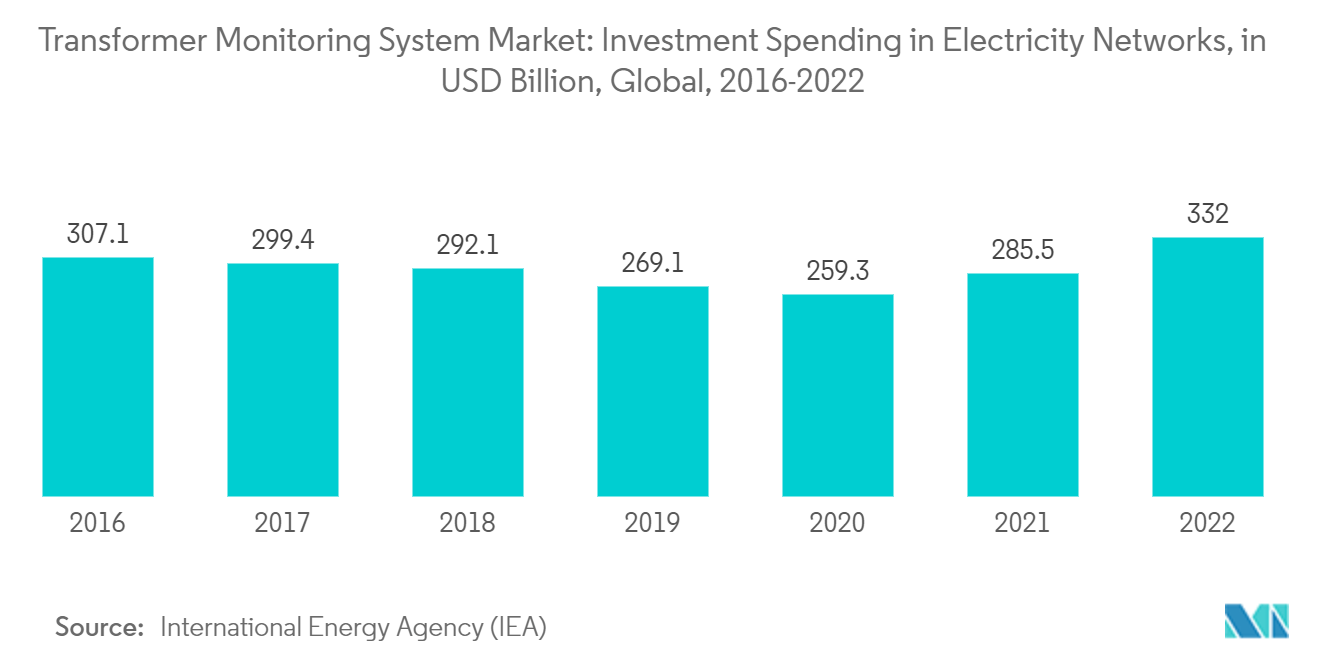Market Trends of Transformer Monitoring System Industry
Software Segment Expected to Experience Significant Market Growth
- Software components typically refer to the digital elements integrated into the transformer monitoring system. These components could include control algorithms, human-machine interfaces (HMI), programmable logic controllers (PLC), supervisory control and data acquisition (SCADA), data logging and analysis tools, safety systems, communication protocols, and diagnostic tools, which are used for predictive maintenance techniques to anticipate issues before they occur.
- This increased adoption of transformers will consequently lead to a higher demand for tailored software monitoring systems. This includes the integration of artificial intelligence (AI) and machine learning algorithms for predictive analytics and optimization of transformers operations. These advanced capabilities enable proactive maintenance, fault detection, and performance optimization, leading to cost savings and improved reliability for end-users.
- Transformer monitoring is becoming more and more essential to prevent damage or accidents in power plants and various industries due to strict legislation pertaining to worker safety in several regions of the world. Increasing investments in real-time monitoring and the Internet of Things (IoT) to ensure the smooth functioning of power plants and industrial facilities are predicted to provide fresh opportunities. Additionally, the accumulation of Internet of Things (IoT) technology has led to the emergence of interconnected transformer monitoring systems, enabling remote monitoring and management for improved efficiency and convenience.
- One prominent trend is the increasing adoption of digitalization and IoT technologies in transformer monitoring systems. This shift toward smart and connected solutions allows for real-time monitoring, predictive maintenance, and optimization of transformer performance, thereby enhancing efficiency and reducing downtime.
- The projected significant growth in demand for smart sensors, actuators, and control valves capable of integrating seamlessly into IoT-enabled transformer monitoring networks is likely to propel market growth. The upgraded features have resulted in lower operating costs, less downtime, and more efficiency. The technologies have given operators advanced functionality, including real-time monitoring, predictive maintenance, and remote optimization.
- According to the International Energy Agency (IEA), the total global investment spending in electricity networks stood at USD 332 billion in 2022. Furthermore, to support the net-zero trajectory, the annual investment is expected to more than triple to USD 871 billion annually in the decade preceding 2050. Thus, investments and upgradation of the T&D infrastructure are expected to continue in the coming years, thereby aiding the demand for transformer monitoring systems.
- As a result, manufacturers in this market are continuously innovating to develop cutting-edge software solutions that not only enhance operational efficiency and safety but also align with sustainability goals. Such factors are expected to aid market growth during the forecast period.

Asia-Pacific Expected to Dominate the Market
- Asia-Pacific is the largest energy consumer globally. As of 2022, according to the Statistical Review of World Energy, the region generated nearly 14,546.4 TWh of electricity, accounting for nearly 49.8% of the global generation. During 2012-2022, electricity generation registered a steady CAGR of 4.6%. Additionally, in 2022, electricity generation increased by 4% Y-o-Y. The rising electricity demand in Asia-Pacific is expected to impact the usage of transformers in the region significantly, thus driving the demand for transformer monitoring systems.
- The rising integration of renewable energy from massive utility-scale renewable energy farms in countries such as China and India, the electrification of industries and buildings, and the growth of data centers all contribute to a significant increase in electricity consumption. As the population and urbanization in the region grow, the demand for electricity is also expected to increase, driving the need for transformers to handle higher voltages, and power levels will also increase. Additionally, integrating renewable energy sources like wind and solar into the grid will require new transformers to control the variable and decentralized energy they produce.
- As electricity demand across China has grown steadily, the country has invested heavily in its T&D infrastructure to satiate the burgeoning energy demand. For instance, in January 2023, the State Grid Corporation of China announced plans to invest nearly USD 77 billion in transmission infrastructure and energy storage systems during 2023, up by nearly 4.0% Y-o-Y.
- India is also one of the largest electricity consumers globally. India is witnessing massive infrastructure development in the energy, transportation, and real estate sectors. These projects require a robust electrical grid system, including power transformers, to support the growing energy demand and ensure reliable power supply to various infrastructural facilities. In addition, the country’s power grid has become older and is in dire need of modernization. With the increasing power load and rising integration of variable generation assets such as solar panels and wind turbines, grid stability has become a significant issue. Hence, the government, including state and federal electric utilities, has been investing heavily in the upgrade and modernization of the grid.
- For instance, according to the Powergrid Corporation of India (PGCIL), the country’s largest transmission utility, the country plans to invest USD 34.2 billion to set up an interstate transmission network (ISTS), primarily to accommodate and transmit renewable energy. According to the state utility, the plan envisions investments of up to USD 17.1 trillion from 2026 to 2027. According to the Power Ministry, the country has already approved 23 ISTS projects for green energy evacuation at a total cost of USD 1.9 billion during FY 2022. As of November 2022, transmission projects worth nearly USD 7.2 billion were approved.
- Such developments are expected to increase the usage of transformers, thus driving the transformer monitoring system market during the forecast period.


